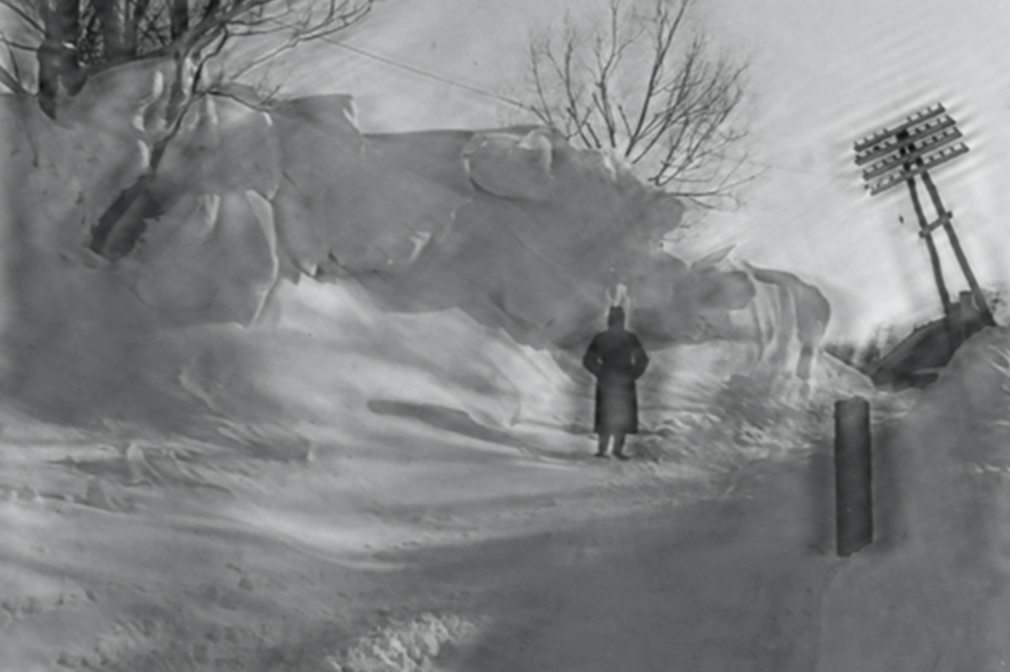Light shines through the curtains of time

Curator Tina Sauerlaender presents the work of artist Ornella Fieres (HfG-graduate)
In the works of artist Ornella Fieres, new technologies meet analog found objects from times past. The artist instrumentalizes photographs from personal estates and archival material from scientific films for her own purposes. She is concerned with "transferring the past into the present and making the invisible processes of the digital visible." Her works show the world of yesterday, seen through the eyes of today's algorithms.
The basis for Ornella Fieres' series Postcards to M / GAN (2021) are flower postcards from the 1960s and 1970s. The postcards come from the estate of an East Berliner, and were acquired by the artist at an online flea market. A self-teaching artificial intelligence called a GAN (Generative Adversarial Network) studies the postcards’ motifs and then creates its own images based on what it has learned. The works illustrate the machine's view of the data that has been entered, creating a matter of fact depiction and a poetic yet irritatingly artificial result.
GANs are self-teaching, but they are nevertheless the products of the people who continue to explore and advance knowledge in the fields of science and computer technology. They symbolize the tireless spirit of discovery. The video work An Algorithm for Snowfall (2019) shows an algorithm-based reconstruction of scientific films, which are played in parallel once forwards and once backwards, by the artist. Fragments from mountain climbs, microscopic observations, and melting glaciers appear distorted in slow motion. The sequences thematize the entangled relationship between researcher and their environment. Quite often, humans intervene in nature without knowing the effects their actions will have on the environment, often with devastating consequences. In the middle of the film, the two film clips meet, run synchronously for a moment, and then disappear again into their spirals. In this temporal distortion, progress and regression cannot be meaningfully distinguished by human perception.
For Inverse Fourier (2021), Ornella Fieres appropriates visual materials from various estates. The artist changes her visual input with the help of the Fourier transform (FT), an algorithm for image compression. She intervenes in the calculations, removing parts from the system, so that it will reproduce her selected output incorrectly. Fieres does not know the result in advance, nor the consequences of her actions. This intervention symbolizes the intervention of humans. Those who, inspired by the spirit of exploration, climb or dismantle mountains, encircle the world with electric cables, or produce atomic reactions. This process is exemplified by the works in the series. By visualizing the disruption in the system, the artist provides insight into the "mindset" of the algorithm.
The title of the exhibition was borrowed from the video work I create paths that lead to the clouds in which we go (2020), in which an artificial intelligence creates a poetic-dystopian vision of the end times based on all the texts that have been written about Ornella Fieres' works to date. This vision also has its hopeful sides, as Ornella Fieres' works always reflect two sides of the same coin. They illustrate both human and computer-generated perception. On the one hand, they compare the relationship between the artist and her tools with the careless interventions of man in nature. On the other hand, they symbolize the creative potential of her collaborative work. Above all, Fieres' works remind us that artificial intelligence, although complex, was created by humans. They therefore reflect one thing above all else: human nature
10. Februar 2021, 19 Uhr
PRISKA PASQUER Virtual Gallery Space in Mozilla Hubs: The link will be published Wednesday, February 10, at 5 pm on the gallery's website section NEWS